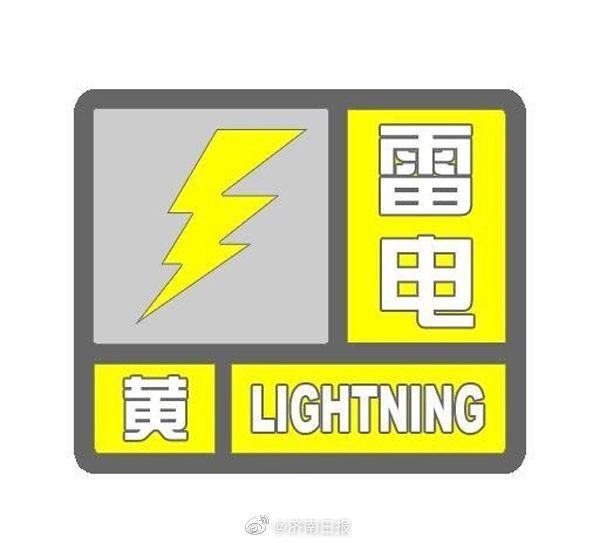console.log('Hello');
};
};
constsayHello = outer; // contAIns definition of the function inner
functionrepeat(fn, num) {
for(leti = 0; i < num; i++){
fn;
}
}
repeat(sayHello, 10); // each sayHello call pushes another 'Hello' to the potentiallyHugeArray
// now imagine repeat(sayHello, 100000)
еңЁиҝҷдёӘдҫӢеӯҗдёӯпјҢpotentiallyHugeArray д»ҺжңӘиў«д»»дҪ•еҮҪж•°иҝ”еӣһпјҢд№ҹж— жі•иў«и®ҝй—®пјҢдҪҶе®ғзҡ„еӨ§е°ҸдјҡйҡҸзқҖи°ғз”Ё inner ж–№жі•зҡ„ж¬Ўж•°иҖҢеўһй•ҝ гҖӮ
3. е®ҡж—¶еҷЁ
еңЁ Java дёӯпјҢдҪҝз”ЁдҪҝз”Ё setTimeout жҲ– setInterval еҮҪж•°еј•з”ЁеҜ№иұЎжҳҜйҳІжӯўеҜ№иұЎиў«еһғеңҫеӣһ收зҡ„жңҖеёёи§Ғж–№жі• гҖӮеҪ“еңЁд»Јз Ғдёӯи®ҫзҪ®еҫӘзҺҜе®ҡж—¶еҷЁпјҲеҸҜд»ҘдҪҝ setTimeout иЎЁзҺ°еҫ—еғҸ setIntervalпјҢеҚідҪҝе…¶йҖ’еҪ’пјүж—¶пјҢеҸӘиҰҒеӣһи°ғеҸҜи°ғз”ЁпјҢе®ҡж—¶еҷЁеӣһи°ғеҜ№иұЎзҡ„еј•з”Ёе°ұдјҡж°ёиҝңдҝқжҢҒжҙ»еҠЁзҠ¶жҖҒ гҖӮ
дҫӢеҰӮдёӢйқўзҡ„иҝҷж®өд»Јз ҒпјҢеҸӘжңүеңЁз§»йҷӨе®ҡж—¶еҷЁеҗҺпјҢdata еҜ№иұЎжүҚдјҡиў«еһғеңҫеӣһ收 гҖӮеңЁжІЎжңү移йҷӨ setInterval д№ӢеүҚ пјҢ е®ғж°ёиҝңдёҚдјҡиў«еҲ йҷӨпјҢ并且 data.hugeString дјҡдёҖзӣҙдҝқз•ҷеңЁеҶ…еӯҳдёӯпјҢзӣҙеҲ°еә”з”ЁзЁӢеәҸеҒңжӯў гҖӮ
functionsetCallback{
constdata = https://www.isolves.com/it/cxkf/yy/js/2023-10-27/{
counter: 0,
hugeString: newArray(100000).join('x')
};
returnfunctioncb{
data.counter++; // data object is now part of the callback's scope
console.log(data.counter);
}
}
setInterval(setCallback, 1000); // how do we stop it?
йӮЈд№Ҳеә”иҜҘеҰӮдҪ•йҒҝе…ҚдёҠиҝ°иҝҷз§Қжғ…еҶөзҡ„еҸ‘з”ҹе‘ўпјҹеҸҜд»Ҙд»Һд»ҘдёӢдёӨдёӘж–№жі•е…ҘжүӢпјҡ
- жіЁж„Ҹе®ҡж—¶еҷЁеӣһи°ғеј•з”Ёзҡ„еҜ№иұЎ гҖӮ
- еҝ…иҰҒж—¶еҸ–ж¶Ҳе®ҡж—¶еҷЁ гҖӮ
functionsetCallback{
// 'unpacking' the data object
letcounter = 0;
consthugeString = newArray(100000).join('x'); // gets removed when the setCallback returns
returnfunctioncb{
counter++; // only counter is part of the callback's scope
console.log(counter);
}
}
consttimerId = setInterval(setCallback, 1000); // saving the interval ID
// doing something ...
clearInterval(timerId); // stopping the timer i.e. if button pressed
4. дәӢ件зӣ‘еҗ¬
жҙ»еҠЁзҡ„дәӢ件зӣ‘еҗ¬еҷЁдјҡйҳ»жӯўе…¶иҢғеӣҙеҶ…зҡ„жүҖжңүеҸҳйҮҸиў«еӣһ收 гҖӮдёҖж—Ұж·»еҠ пјҢдәӢ件зӣ‘еҗ¬еҷЁдјҡдёҖзӣҙз”ҹж•Ҳ пјҢ зӣҙеҲ°дёӢйқўдёӨз§Қжғ…еҶөзҡ„еҸ‘з”ҹпјҡ
- йҖҡиҝҮ removeEventListener 移йҷӨ гҖӮ
- зӣёе…іиҒ”зҡ„ DOM е…ғзҙ 被移йҷӨ гҖӮ
consthugeString = newArray(100000).join('x');
document.addEventListener('keyup', function{ // anonymous inline function - can't remove it
doSomething(hugeString); // hugeString is now forever kept in the callback's scope
});
йӮЈд№ҲеҰӮдҪ•йҒҝе…Қиҝҷз§Қжғ…еҶөе‘ўпјҹеҸҜд»ҘйҖҡиҝҮ removeEventListener йҮҠж”ҫзӣ‘еҗ¬еҷЁпјҡ
functionlistener{
doSomething(hugeString);
}
document.addEventListener('keyup', listener); // named function can be referenced here...
document.removeEventListener('keyup', listener); // ...and here
еҰӮжһңдәӢ件зӣ‘еҗ¬еҷЁеҸӘйңҖиҰҒиҝҗиЎҢдёҖж¬ЎпјҢaddEventListener еҸҜд»ҘеёҰжңү第дёүдёӘеҸӮж•°пјҢдёҖдёӘжҸҗдҫӣйҷ„еҠ йҖүйЎ№зҡ„еҜ№иұЎ гҖӮеҸӘиҰҒе°Ҷ {once: true} дҪңдёә第дёүдёӘеҸӮж•°дј йҖ’з»ҷ addEventListener пјҢ зӣ‘еҗ¬еҷЁе°ҶеңЁдәӢ件еӨ„зҗҶдёҖж¬ЎеҗҺиҮӘеҠЁеҲ йҷӨ гҖӮ
document.addEventListener('keyup', functionlistener{
doSomething(hugeString);
}, {once: true}); // listener will be removed after running once
5. зј“еӯҳ
еҰӮжһңдёҚж–ӯеҗ‘зј“еӯҳдёӯж·»еҠ еҶ…е®№пјҢиҖҢжңӘдҪҝз”Ёзҡ„еҜ№иұЎд№ҹжІЎжңү移йҷӨпјҢд№ҹжІЎжңүйҷҗеҲ¶зј“еӯҳзҡ„еӨ§е°ҸпјҢйӮЈд№Ҳзј“еӯҳзҡ„еӨ§е°Ҹе°ұдјҡж— йҷҗеўһй•ҝпјҡ
letuser_1 = { name: "Peter", id: 12345};
letuser_2 = { name: "Mark", id: 54321};
constmapCache = newMap;
functioncache(obj){
if(!mapCache.has(obj)){
constvalue =https://www.isolves.com/it/cxkf/yy/js/2023-10-27/ `${obj.name}has an id of ${obj.id}`;
mapCache.set(obj, value);
return[value, 'computed'];
}
return[mapCache.get(obj), 'cached'];
}
cache(user_1); // ['Peter has an id of 12345', 'computed']
cache(user_1); // ['Peter has an id of 12345', 'cached']
cache(user_2); // ['Mark has an id of 54321', 'computed']
console.log(mapCache); // ((…) => "Peter has an id of 12345", (…) => "Mark has an id of 54321")
жҺЁиҚҗйҳ…иҜ»
- AIеҹәзЎҖиҪҜ件пјҡеҰӮдҪ•иҮӘдё»жһ„е»әеӨ§+е°ҸжЁЎеһӢпјҹ
- еҰӮдҪ•е°Ҷжң¬ең°jarж–Ү件жү“еҢ…еҲ° springboot жү§иЎҢjarж–Ү件дёӯ
- еҰӮдҪ•дҪҝз”Ё Python е’Ң python-docx еә“иҜ»еҸ–гҖҒеҶҷе…Ҙе’Ңж“ҚдҪң Word ж–Ү件
- еҰӮдҪ•дҪҝз”ЁGPTдҪңдёәSQLжҹҘиҜўеј•ж“Һзҡ„иҮӘ然иҜӯиЁҖ
- жҒ¶зҠ¬е’¬дјӨеҗҺеҰӮдҪ•еӨ„зҗҶпјҹжҖҺд№ҲжҺҘз§ҚзӢӮзҠ¬з–«иӢ—пјҹеҚҒй—®еҚҒзӯ”жқҘдәҶ
- дёӘдәәе…»иҖҒйҮ‘еҲ¶еәҰеҮәзӮүпјҒжҲ‘们иҜҘеҰӮдҪ•и§ЈиҜ»е’ҢйқўеҜ№пјҹ
- еҰӮдҪ•йҖҡиҝҮ规еҲ’жҸҗй«ҳиҮӘе·ұзҡ„е…»иҖҒйҮ‘ж°ҙе№іпјҹ
- е°Ҹзұіз”өи§ҶеҰӮдҪ•еҪ»еә•е…ій—ӯпјҢе°ҸзұіжүӢжңәзӣёжңәжҖҺд№Ҳе…ій—ӯзҫҺйўң
- й’үй’үеҰӮдҪ•еЎ«еҶҷжҜҸж—ҘеҒҘеә·дёҠжҠҘпјҢй’үй’үе‘ҳе·ҘжҜҸж—ҘеҒҘеә·жү“еҚЎжҖҺд№Ҳи®ҫзҪ®
- еҗғдёҖд»Җд№Ҳй•ҝдёҖжҷәпјҢдёәд»Җд№ҲиҖҒжҳҜиҰҒеҗғдёҖе ‘жүҚй•ҝдёҖжҷәжҖҺд№ҲйҒҝе…ҚиҝҷдёӘй—®йўҳ












![[зҺӢ瑶]иЈҒеҶідәҶпјҒзү№жң—жҷ®ж”ҝеәңиҝқжі•](http://dayu-img.uc.cn/columbus/img/oc/1002/2f44f7485846122ee8150e78bee9aefa.jpg)




